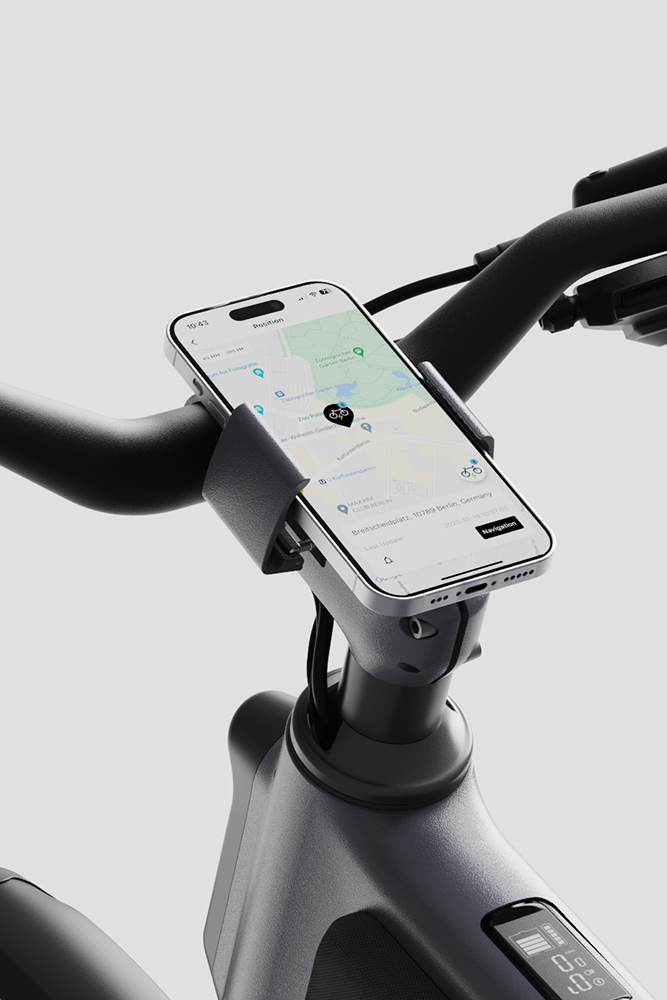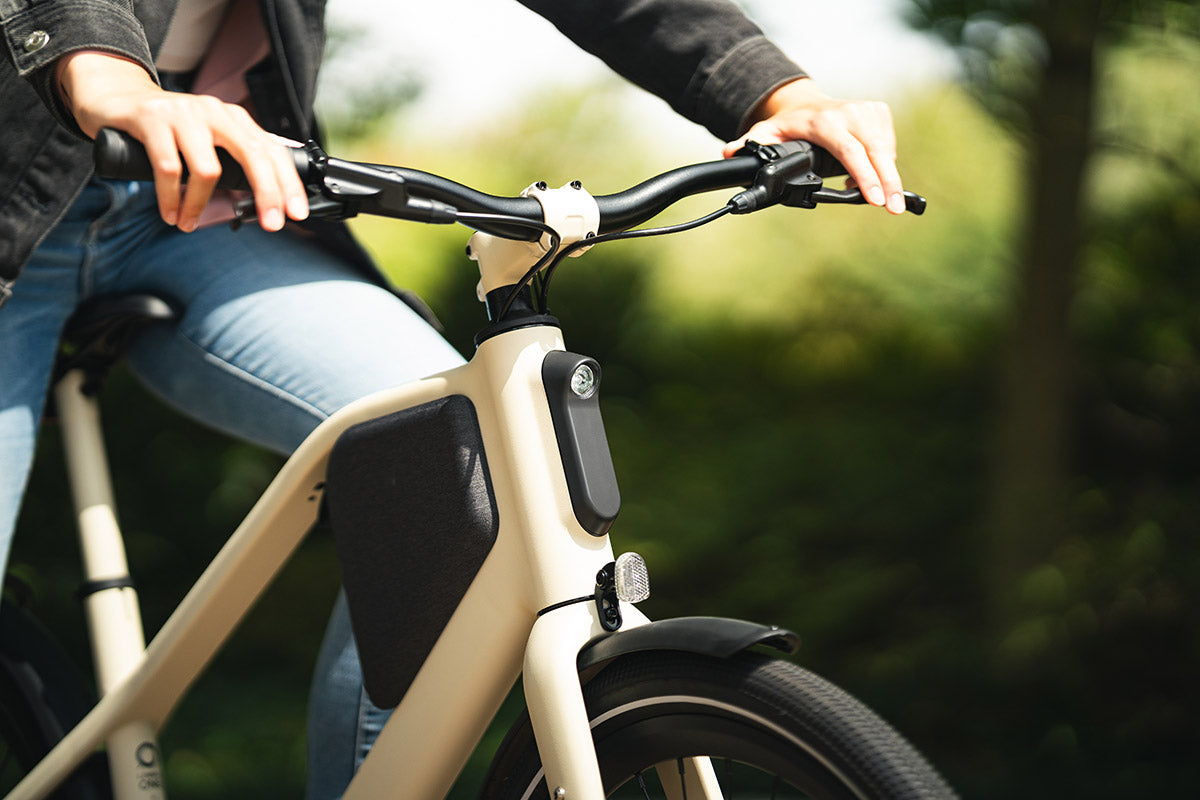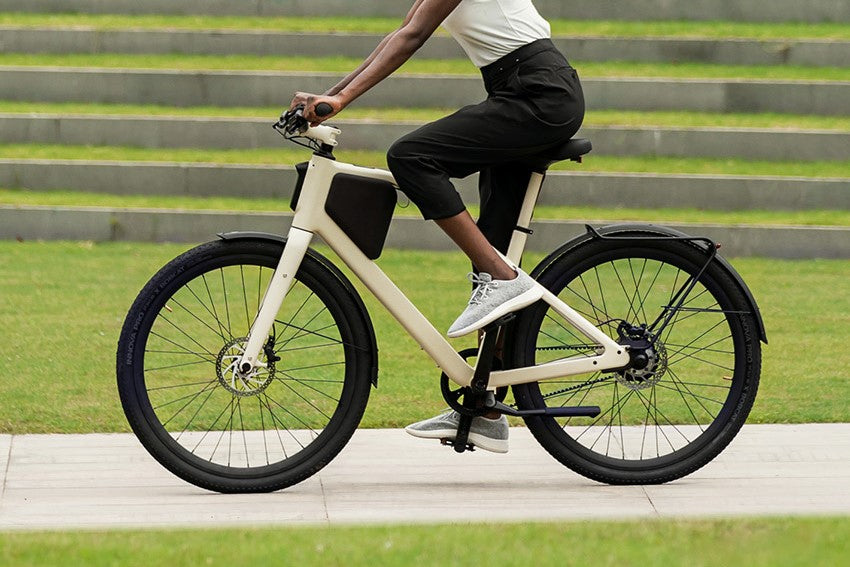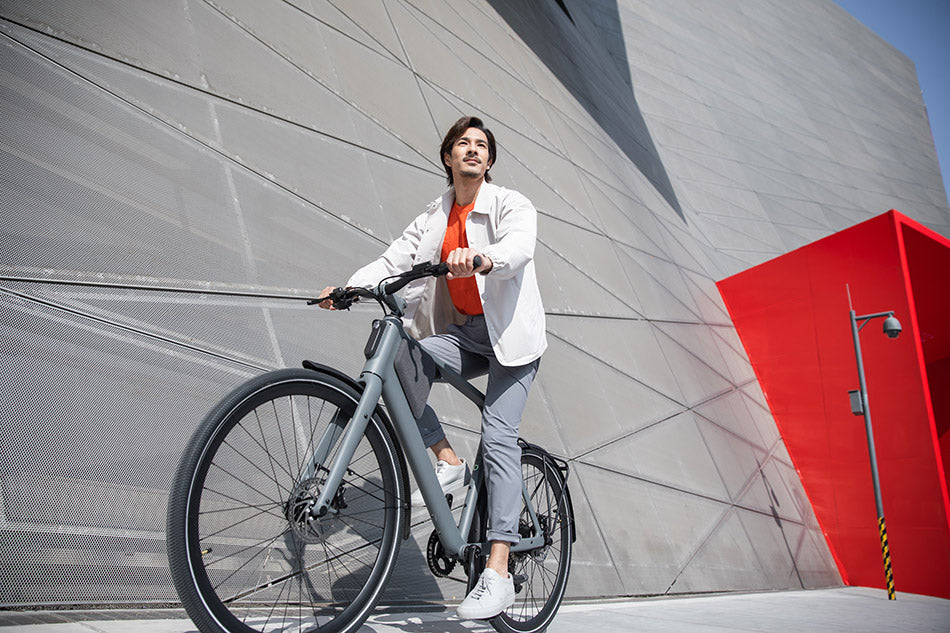Combining human pedal power with an electric drive has resulted in an innovative transportation solution: the hybrid e-bike. This article examines the basics of hybrid e-bikes, distinguishes their components and types, and highlights their many benefits.
What are hybrid e-bikes?
Hybrid e-bikes combine traditional bicycle mechanics with modern electric drive systems. The electric motor on these bikes assists the rider's pedal power, making it easier to ride over different terrain and enabling longer distances without excessive fatigue.
Advantages of hybrid e-bikes
The benefits of hybrid e-bikes - from environmental sustainability to improved commuting efficiency to promoting physical health - paint a compelling picture of their role in modern transportation:
- Environmentally friendly: Hybrid e-bikes are champions of environmental friendliness. Integrating electric power with human effort makes them consume far less energy than motorized vehicles, significantly reducing carbon emissions. This green attribute makes them a preferred option for environmentally conscious individuals who want to positively impact the planet. Unlike cars, which release pollutants with every kilometer, hybrid e-bikes offer a clean, renewable way to travel and highlight a small but meaningful step in the fight against climate change.
- Commuting efficiency: Hybrid e-bikes excel in efficiency, especially in busy urban landscapes where traffic congestion is a daily obstacle. Hybrid e-bikes can navigate tight spaces and often have access to bike lanes, allowing riders to bypass congestion and reach their destinations faster. This reduction in commute time is not just a convenience; it represents a significant increase in daily productivity and stress reduction as riders avoid the frustration associated with traffic congestion.
- Improved physical health: Physical activity, an intrinsic benefit of cycling, is increased in the context of hybrid e-bikes. They make cycling accessible to a wider audience, including those deterred by physical limitations or the daunting prospect of long or challenging rides. Adjustable pedal assist allows individuals to customize the level of effort according to their fitness needs or mood on any given day. Users can find their ideal point, encouraging a more active lifestyle, whether seeking an intense workout or a gentle ride. This flexibility can improve cardiovascular health, weight management, and overall well-being.
- Versatility and adaptability: The dual nature of the hybrid e-bike serves as a bridge between traditional cycling and motorized transportation, offering the best of both worlds. Electric assist can be minimized for recreational rides, allowing enthusiasts to enjoy the purity of pedal-powered cycling. Conversely, the electric motor can take on a larger role in commuting or longer distances, reducing sweat and exertion. This versatility ensures that hybrid e-bikes are not just a means of transportation but a customizable tool that adapts to its users' different needs and desires.
Components of a hybrid e-bike
- Electric motor: The electric motor is a central component that supports the rider's efforts. Positioned on the wheel hub or in the center frame, it ensures a balanced power distribution and improves the riding experience without overwhelming the cyclist's control.
- Battery: The battery is crucial for determining the range of the e-bike when operating the electric motor. Modern hybrid e-bikes have lithium-ion batteries due to their lightness, durability, and fast charging capacities, making them suitable for everyday use.
- Pedal assist system: The pedal assist system intelligently adjusts the level of motor assistance to the rider's pedaling power. This system promotes a seamless integration of human and electric power, allowing for a more intuitive and enjoyable ride.
Types of hybrid e-bikes
- Commuter hybrid e-bikes: Designed for the urban rider, commuter hybrid e-bikes emphasize comfort, durability, and efficiency. They often include integrated lighting, mudguards, and pannier racks to support daily commuting needs.
- Mountain hybrid e-bikes: Mountain hybrid e-bikes are aimed at off-road enthusiasts and feature robust frames, suspension systems, and tires that are tailor-made for rough terrain. These bikes improve riders' skills and allow them to tackle challenging trails with less effort.
- Foldable hybrid e-bikes: Foldable hybrid e-bikes offer ultimate convenience and portability. Ideal for city dwellers with limited storage space or for those who combine cycling with public transport, these bikes fold into a compact form for easy transportation and storage.
How do you choose the right hybrid e-bike?
Consider your riding needs
The first step in choosing a hybrid e-bike is a thorough self-assessment of your riding intentions. Are you looking for a reliable commuter to navigate city streets, a rugged partner for off-road trails, or perhaps a versatile bike for leisurely weekend excursions? Each category of hybrid e-bike is tailored to specific scenarios. Commuter e-bikes, for example, often have integrated lights for safety, a more comfortable posture for long rides, and sometimes even integrated racks for carrying bags or shopping. Mountain e-bikes, on the other hand, are equipped with features such as stronger frames, shock absorbers, and tires designed for grip and durability on rough terrain. Understanding the primary environment and purpose of your e-bike will ensure that you choose a model that serves you best, whether for daily use, adventure, or occasional exploration.
Test ride and comfort
Reading specs and reviews can only tell you so much; the true test of a hybrid e-bike's suitability comes from hands-on experience. A test ride can reveal nuances in the fit, comfort, and handling of the bike that aren't apparent on paper. How does the bike feel underneath you? Do the frame size and shape allow for a natural riding position? Is the bike responsive, and does it handle smoothly when cornering and stopping? These are crucial considerations that can significantly impact your riding experience. Some riders may prefer a bike with a more upright position to reduce strain on the back and shoulders, while others may seek a sportier position that allows for more aggressive riding. The goal of the test ride is to make sure the bike feels like an extension of yourself, comfortable and intuitive to control.
Price and budget
Finally, the financial aspect of buying a hybrid e-bike should not be overlooked. Prices can range from a few hundred to several thousand dollars, depending on the quality of the motor, the battery, the overall build, and the brand of the bike. However, it is important to note that the most expensive option is not necessarily the best for every rider.
Consider which features are essential for your needs and which you can do without. Also, consider how an e-bike can save you money in the long run. For city commuters, for example, hybrid e-bikes can significantly reduce the cost of public transportation, gas, and even parking fees.
It's important to weigh up the initial investment against the long-term savings. A higher initial investment may be justified if it results in more reliable performance and enjoyable riding.
Conclusion
Hybrid e-bikes combine innovation and practicality, offering a versatile, sustainable, and health-conscious way to get around. By understanding the different aspects of these bikes - from their components and types to choosing the right model and adopting the lifestyle they promote - riders can make informed choices that improve their mobility, fitness, and environmental impact. When human pedal power meets electric propulsion, the hybrid e-bike is a compelling option for modern commuters, adventurers, and the environmentally conscious alike.





